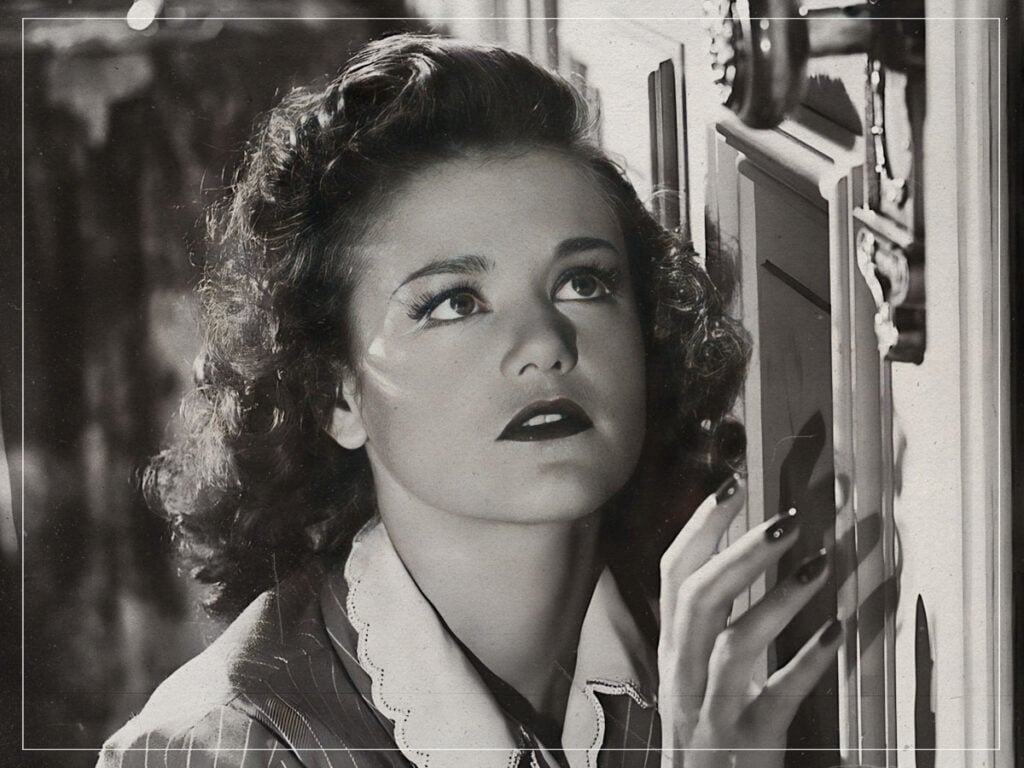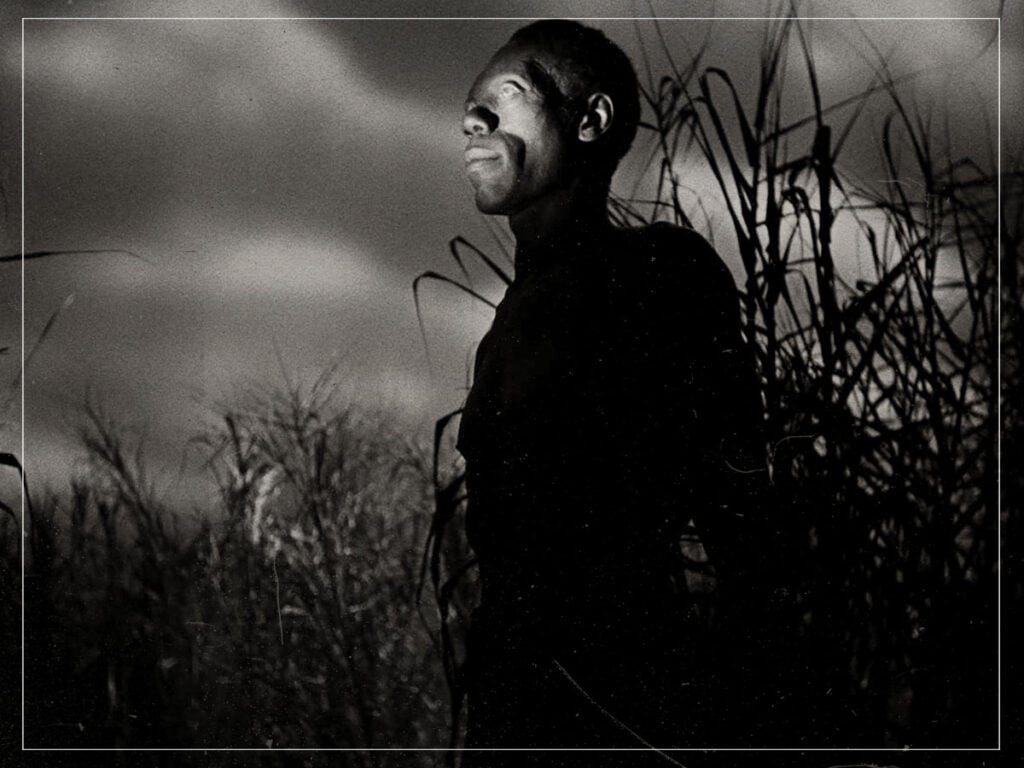(Credits: Far Out / TCM)
In the late 1930s and early ‘40s, American cinemagoers were fed a steady stream of rousing propaganda. The dawn of a new world war brought a wave of patriotic screen heroes who put their country above themselves, with Rick Blaine in Casablanca being the most enduring example. At the same time, however, audiences were looking for other forms of catharsis, and as has been the case for as long as the genre has existed, horror came to the rescue.
Within this category, no filmmaker was as influential as Val Lewton, the man who presided over the B-movie unit at RKO Studios. Far from creating trashy double bills for audiences who weren’t picky about what they got, he made films that were socially transgressive and timely. Though his name may not be widely known, he was one of the first great influences on modern horror movies, destigmatising supposedly monstrous characters and villainising those who ostracise them instead.
Ironically, Lewton got his big break thanks to Orson Welle’s misfortune. Following the disastrous release of Citizen Kane, which did almost no business at the box office and received polarised reviews from critics, the studio started a new advertising campaign. Titled Showmanship in Place of Genius: A New Deal at RKO, it promised a cheaply made spectacle over the experimentation of a single filmmaker. With their weakened financial state in mind, the studio heads decided to reboot their B unit with horror movies that imitated the massively successful pulpy horror productions at Universal.
They chose Lewton to lead the charge. As the former private secretary of super-producer David O Selznick, he had played an instrumental, if uncredited, role in the conception and execution of MGM hits like Gone with the Wind and Alfred Hitchcock’s Rebecca. Now a producer in his own right, they thought he would be the perfect, affordable fit for RKO’s new path.
During his eleven-picture stint at the studio between 1942 and 1946, Lewton was given tight parameters. For one thing, he never got to choose the title of his movies. He was simply given a name that was almost always a knock-off of a Universal film (The Leopard Man instead of Wolf Man, for example), along with a tagline, a budget of $150,000, and a strict runtime limit of 75 minutes. On the other hand, as long as he stuck within those boundaries, he was given free rein.

From Lewton, the studio was expecting a competent “yes man” who knew how to balance a budget, work quickly, and create a reliable assembly line of productions. What they got was a subversive auteur not unlike Welles, who stretched narrative and stylistic boundaries.
The producer decided early on that he wanted his audience to identify and empathise with marginalised figures. By today’s standards, creating sympathetic monsters is hardly revolutionary, but at the time, it was the height of cinematic subversion. When the studio assigned him the 1942 film Cat People, which is now a cult classic, they gave him the tagline, “She was one of the dreaded ‘Cat People’— doomed to slink and prowl by night… always fearing that a lover’s kiss might change her into a snarling, clawing KILLER!”
Lewton leaned into the idea of doom. Centring the film on a young woman who turns into a panther in moments of sexual arousal, he and the director Jacques Tourneur (his most frequent collaborator) put the focus on her psychological torment – her fear of hurting those she loves and of never being able to enjoy a normal life. Far from being “one of the dreaded ‘Cat People’,” she cries when she inadvertently kills a bird and is wracked with guilt when she can’t give her husband what he wants.
Lewton was also intentional about casting an actor who looked more like a kitten than a feline seductress. Simone Simon had the childlike, elfin face of an ingénue rather than the arch, sophisticated look of a femme fatale. As such, she looks like an innocent victim in the film rather than an evil siren. In the end, the monsters in the movie turn out to be the men in her life – the husband who abandons her for another woman and the psychiatrist who tries to rape her.
RKO executives were appalled by the film and its lack of a classic monster, while critics found it downright irresponsible. One called it “unhealthy”, while another called it “morbid and unproductive”. But audiences loved it. Lewton had shot Cat People in three weeks with a budget that was $15,000 under the studio’s ludicrously low limit, and its box office returns brought RKO back from the brink of bankruptcy.

Lewton’s next film, I Walked with a Zombie, was even more subversive. Set on an island plantation in the Caribbean, it explores racism, slavery, and voodoo religion. It also challenges the very definition of a zombie, transforming it into a tragic condition that leaves its victims in a liminal space between life and death.
Again, the supposed monster of the film is a young woman who has been cursed, and her condition leads more to her own suffering than anyone else’s. Like the main character in Cat People, she doesn’t survive the film, and her death is more likely to conjure tears from the audience than reassurance that the source of their fear has been dealt with. At a time when movies were supposed to show clear delineations between good and evil and avoid the collective grief of yet another world war, Lewton muddied the waters and lingered on the pain.
In another show of empathy, Lewton made The Leopard Man, turning a title that promises a monstrous creature who is half man, half leopard, into a movie about animal rights. The plot follows a leopard who escapes from the nightclub where it is meant to perform like a circus animal. Scared and confused, it kills a girl. When women begin to turn up brutally murdered, the crimes are blamed on the leopard, conveniently ignoring the very human killer who is hiding in plain sight.
Lewton highlights the leopard’s innocence even further by showing that the only reason it ran away from the nightclub in the first place was its fear of the loud castanets. The things we think are monstrous, Lewton suggests, are almost always victims of misunderstanding. Meanwhile, the real monsters are lurking among us.
At the end of the war, Lewton lost his job. The executive who had defended him at RKO had died, leaving the studio in turmoil, and audiences were no longer interested in brooding psychological chillers that turned outcasts into victims. They wanted movies that offered either complete escapism or ones that approached the fallout of the war head-on. Of these, William Wyler’s The Best Years of Our Lives is still the gold standard. Lewton was promised the opportunity to make “A” pictures at Paramount, but he wasn’t given the same creative freedom that he’d had at RKO, and many of his projects fizzled. When he died in 1951 at the age of 46, he wasn’t lauded as the pioneer that he would be decades later.
Today, Lewton is hailed for his subtle use of light and shadow, his subversion of what a monster can look like, and the affinity he showed for ostracised figures. However, he also had a pessimistic view of being an outsider, which many filmmakers still avoid for fear of devastating their audience. Most of the outcasts in his movies die, a cruel turn of fate that feels inevitable in the unsentimental world of his movies.
He chose to make society at large the real source of horror, a damning worldview that is as relevant as ever. Echoes of his work can be found in movies like David Lynch’s The Elephant Man and Tim Burton’s Edward Scissorhands, where outsiders are celebrated, but the harsh realities of the world are never glossed over.
Related Topics
Subscribe To The Far Out Newsletter
This post was originally published on here





